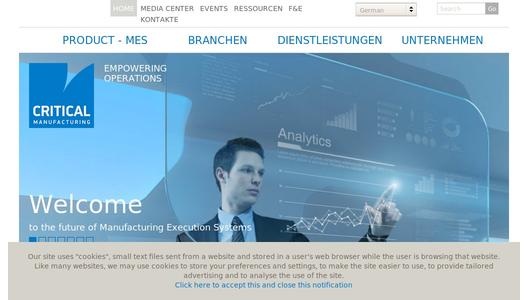Compliance, although a critical part of the Medical Device industry, is still only one of the top concerns for the manufacturers. Like any highly competitive industry, reduction of cost, increase in throughput, product innovation, stable & flexible supply chain, increased top line/revenue and satisfied customers are the challenges faced every day by all organizations, irrespective of the size.
MES applications, even in their most basic form, are automation and integration tools which allow for operations to be connected with higher and lower enterprise level applications. The MES allows information to travel across the organization in a seamless manner and helps exercise control and improve the speed of innovation. Compliance too is fully automated through the MES, but the advantages go above and beyond and extend to be a more strategic tool addressing the challenges described above.
Challenge: provide the levels of returns that investors expect
Cost reduction is one of the main challenges faced by the Medical Device industry. To this end, MES application allows reduction or reallocation of existing workforce, which is currently occupied by maintaining the paper trail for compliance. When the MES automates the operation, the workforce can be better organized and allocated more value adding work, where the overall headcount may be reduced or better channelized to facilitate expansion activities.
More than cost related to human resources, the MES allows reduction of waste by ensuring the process is executed as planned and from allocation of material from the store, to each operation, right until the ready goods reach the warehouse, each and every transaction is recorded, errors reported, damage contained and corrective action automatically triggered. Since the MES literally orchestrates the entire production process, the chances of extra costs being incurred due to human errors is drastically reduced.
Key to survival: increased speed of innovation
Besides reducing costs, the MES also acts as a tool for improving the manufacturing efficiency of the plant and the rate of innovation. Since the application enforces the SOP, the production is streamlined and geared towards execution based on best practices in the industry.
The MES allows organizations to monitor globally recognized metrics like the OEE, which help recognize improvement areas in the current operation. As the actionable data related to each and every article produced is captured from the shop-floor, the designers and the R&D teams are allowed to analyze and improve products even as they are being produced for the very first time - this allows the overall speed of innovation to improve.
Example? Say an issue related to a product is logged from a sales manager in the organization’s ERP from Dubai. The MES is capable of immediately highlighting the same to both production staff and the R&D department. This allows relevant personnel to discuss the current issue and not only improvise but immediately initiate the design of a new version. The new version designed may already be prototyped as the specs are loaded on the MES and it helps the fab personnel execute the new design.
New products get rolled out quicker, with being designed, tested and prepared for bulk production faster than ever before. The way in which the MES application works allows for stabilization of the production process, as the entire production process related to a new product may be configured into the system as the product gets designed and the prototype tested.
Building new strengths: superior supply chain performance
A stable supply chain is most desired for any organization irrespective of their size and the MES is one of the most suitable ways to achieve this. Since the MES application is capable of monitoring the entire spectrum of material and consumables used in the production of any product in the spectrum of the operation, errors related to a particular batch of material or from a particular supplier can be recorded, analyzed and identified much faster. The capability of integrating with the applications like the SCM allows to communicate issues detected automatically to suppliers, which may help them take corrective actions or ship replacements faster.
With the process being more organized and controlled, the overall throughput per plant per quarter would increase, allowing an increase in the top-line performance of the organization. Faster rotation of money enables realization of better profitability, while helping the organization to target next investment areas. The funneling of money into R&D and the rate at which it happens would be improved with the contributions of the MES.
All said and done, it is easy to say that the MES application is much more than just a tool to automate compliance efforts. Medical Device and Diagnostics companies around the world should consider MES as a strategic tool to achieve best in class operations, rather than thinking of it as a better way to approach compliance.
Download White Paper: Five Ways Medical Device Industry Leaders Maintain their Manufacturing Edge by Julie Fraser, Iyno Advisors
Download Case Study: MES allows medical device manufacturer to increase compliance, efficiency and control by Critical Manufacturing


